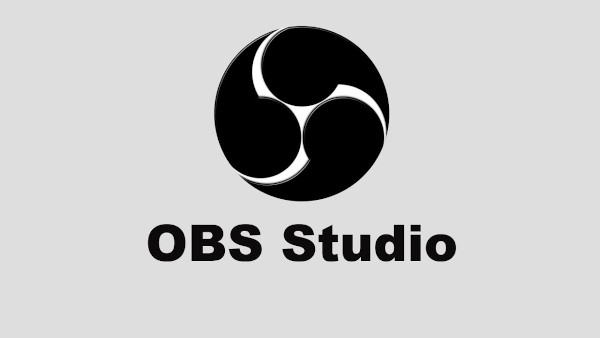

The arrow buttons can be used to change the order. For example: Welcome, Desktop, Game, Break, End. You can create as many Scenes as you want, and name them to easily distinguish between them.
#Obs studio logo plus
Right click in the box under Scenes (or use the plus at the bottom) to add a scene if there are none listed yet. These are where you set up your stream layout, add your games, webcams, and any other devices or media that you want in the output. Scenes and Sources are the meat of OBS Studio. If you have questions, search around or hop in the support chat and ask!
#Obs studio logo 1080p
If you have 1080p sources, but want to stream at 720p, this is where you would set that. This is the resolution that the stream/recording will output at, using the selected downscale filter.Output (Scaled) Resolution should be the Stream Output Resolution (720p, 480p, etc).You usually want this to match your monitor display resolution, or if you are playing games, the game resolution. This is the amount of space you have to fit your sources.Enable Push-to-mute or Push-to-talk for each device (keys configured in the Hotkeys section).Select up to three Microphone/Auxiliary Devices.Enable the Replay Buffer (hotkey to save the buffer must be set under the Hotkeys section).Encoder option will not show up until you select a recording quality other than Same as stream.Select a Hardware Encoder if available (only if you use a different preset than "same as stream" and if a Hardware Encoder is available).Record using a preset (Same as stream, High Quality, Indistinguishable Quality, and Lossless) and a different Encoder (if available).Around 160kbps for streaming, or lower if you have a low upload speed This changes according to your upload speed and the limitations of the service you use (for example, 6000kbps max for ) Generally, unless you know why you need to change it, the default options are recommended. We will not be covering advanced options in this guide (see links at the end). Advanced output mode gives you further options to configure your Stream and Recording independently if you want to. Note: This section covers Simple output mode. Enter your Stream Key (this can generally be found using the 'Get Stream Key' button).Select the server (or enter its URL for Custom Streaming Servers).
#Obs studio logo full
Select one of the included Services (Check "Show all services" to see the full list in the dropdown) or set Custom Streaming Server.Enable/Disable automatic recording when streaming.Show confirmation for starting/stopping streams.Enable/disable system tray icon (required for hiding to tray).This will not cover everything, but will be an overview of the basics and what you can do in each section. Overall, most settings will be fairly self-explanatory. Use it if you're brand new to OBS Studio and just want to get started as soon as possible! The 4-step Quickstart guide has been moved to OBS Studio Quickstart. This guide is broken into these main sections: It may seem like a lot to take in all at once just take your time and read carefully. However, even if you don't have any previous experience, don't be discouraged! This guide can still be very useful. This guide assumes you already have a basic knowledge of streaming services and streaming terminology, and aims to give you a quick overview of the most important options and features in OBS Studio.


 0 kommentar(er)
0 kommentar(er)
